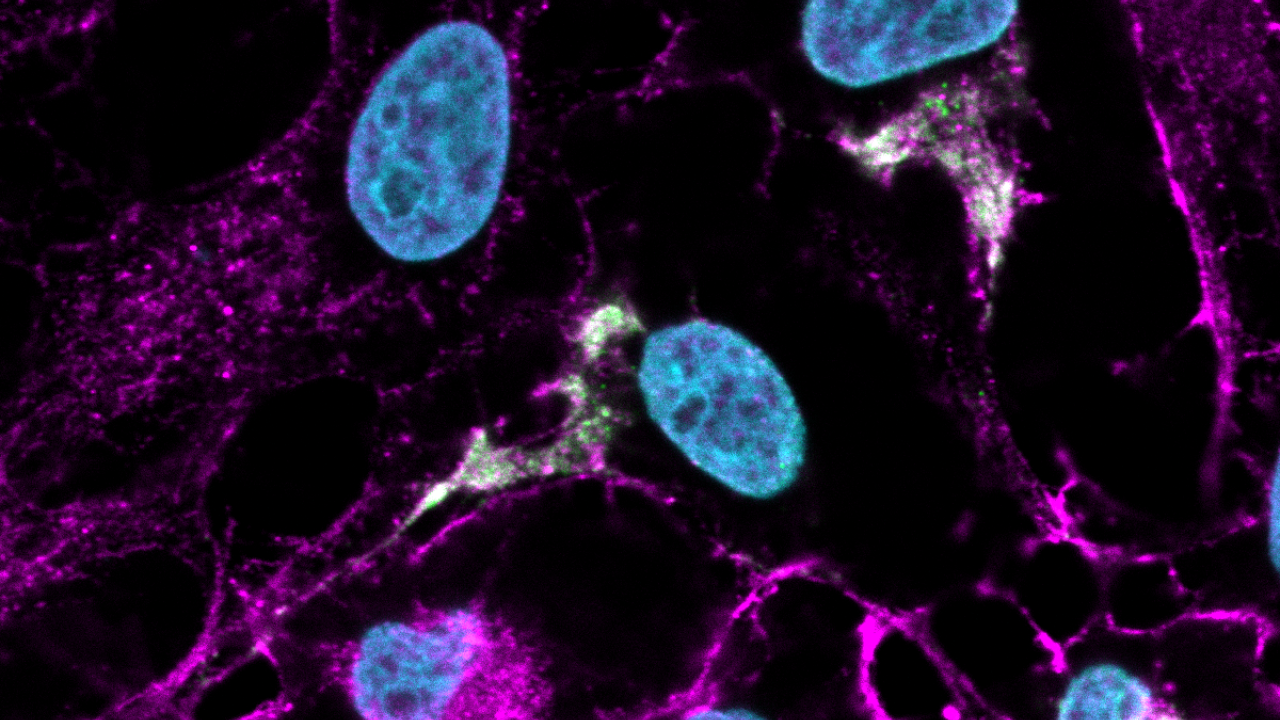
NIH Awards Priya Shah $2.8 Million to Research How Zika Virus Causes Brain-Related Birth Defects
A recently discovered link between a critical human protein called ANKLE2 and Zika-borne viral microcephaly begs deeper investigation
For most people, contracting Zika virus, a flavivirus carried by mosquitos, is akin to getting any mildly inconvenient virus.
You might get a fever and a rash, and it's gone in a few days. But for pregnant people, there is a roughly 4% chance that a bite from a mosquito with Zika virus could have life-altering effects on developing fetuses in the form of microcephaly, a neurological condition that indicates an under-developed brain.
This is because the virus essentially hijacks ANKLE2, a human protein crucial in stem cell growth, and uses it to replicate itself, an interaction that Priya Shah, an assistant professor in the Departments of Chemical Engineering and Microbiology and Molecular Genetics at the University of California, Davis, has been researching since 2017.
Now thanks to a $2.8 million grant from the National Institutes of Health (NIH), Shah will spend the next five years investigating the relationship between this human protein ANKLE2 and the Zika virus protein NS4A to shed new light on why this interaction causes microcephaly in some developing infants.
Breaking Down the Connection
Before securing funding, Shah needed proof of the connection between the proteins, but because ANKLE2 is not widely studied, she and her team of researchers had to develop research tools from scratch, including using the genome editing software CRISPR-Cas9 to engineer cells that were missing ANKLE2. They then infected them with Zika virus and found that the virus replicates 10 to 100 times better in cells with ANKLE2 than in those without.

They also found that when the virus attacks ANKLE2 to use it for replication, it pulls the protein to its location, disrupting ANKLE2's normal function. In an adult, this will likely result in few complications, but it can be catastrophic for growing fetuses.
"In an adult, if ANKLE2 isn't functional in the liver or in the blood or in the skin, it's not going to cause disease," Shah said. "But in a developing brain of a fetus, ANKLE2 is really important. So, when it gets hijacked to promote replication, that's when it's really important function gets disrupted, and that's why we see disease."
Armed with this base knowledge and the NIH grant, Shah and her team of researchers — which includes Nikki Link, a neurobiology professor at the University of Utah whose fruit fly model was instrumental in proving the virus-protein connection, and Matt Evans, a microbiologist studying virus-host interactions at the Icahn School of Medicine at Mount Sinai — are using proteomics and systems biology techniques to dig deeper into the functions of ANKLE2 and its relationship with NS4A.
"We want to figure out what this protein is actually doing for the virus. We know that it helps, but we don't know how it helps," said Shah. "And then we want to understand exactly what aspects of ANKLE2 function are disrupted to cause birth defects. We know that ANKLE2 is involved in promoting stem cell division in the brain, which is really important for brain development, but we don't know what ANKLE2 actually does."
Building on an Engineering Foundation
Although Shah's research is rooted in microbiology and genetics, Shah credits her background in chemical engineering with honing her problem-solving skillset and teaching her flexibility, which gave her the confidence to branch out to the viral field. Shah views chemical engineers, herself included, as being jacks-of-all-trades, leveraging tools and expertise that work well with biological systems, partly because much of biology is a liquid phase system, which chemical engineers are very familiar with.
Her engineering knowledge and the chemical engineers at her lab will be especially impactful, Shah says, in handling the data generated from experiments on ANKLE2 and NS4A, which can result in hundreds of protein interactions. To test them all manually would be inefficient, but by using artificial intelligence to help sift through such a huge data set, they can shift resources to where they will better used.
"We can do a lot of rudimentary experiments using artificial intelligence, and we can then be more educated and refined about which proteins we actually want to simulate using more refined tools like molecular dynamics, because it's more resource intensive. Our chemical engineering background helps with that," Shah said.
Putting Together the Pieces
Once Shah has her hypotheses, Link will help test them using her fruit fly model, and using chemical engineering techniques, Shah will simulate and experimentally test how the proteins interact. Shah will then collaborate with Evans to use his lab's deep mutational scanning tool to test out all possible mutations in the Zika virus protein NS4A and figure out which mutations kill the virus and which ones allow them to replicate.
The final piece of the puzzle will combine the data from Evans' lab with the simulation data to test specific amino acids and find which ones can break the interaction between ANKLE2 and NS4A.
Once they can pinpoint those specific amino acids, Shah said, this information could be applied to preventative measures like vaccines and genetic testing, as well as therapies for those dealing with Zika virus symptoms. Collecting this data could have huge impacts on the developing economies that are the hardest hit by viral outbreaks, a goal she has been working toward since her research began six years ago.
"It's been slowly building into the work that we have now, but we finally had all of the elements in place to secure funding from the NIH," said Shah. "It's an especially exciting grant because it can fund the bulk of our research in the lab. This project is really going to grow over the next five years."
Media Resources
- This story originally appeared on the College of Engineering website.
